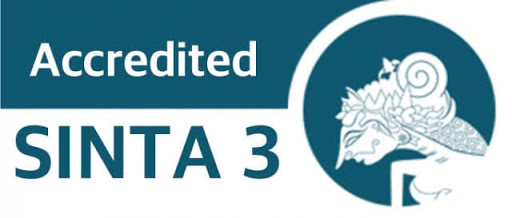PEMBELAJARAN STUDENTS TEAM ACHIEVEMENT DIVISION PADA MATERI LISTRIK STATIS UNTUK MENINGKATKAN MOTIVASI DAN HASIL BELAJAR SISWA KELAS XII SMA NEGERI 10 PEKANBARU
Abstract
This research was a classroom action research. This research was conducted in two cycles. The subjects of this study were students of grade XII SMA 10 Pekanbaru. The purpose of this study was to increase motivation and learning outcomes of students of SMA 10 Pekanbaru totaling 37 students. Physical material was given on the subject of static electricity. At the beginning the students were given a test to find out the students' learning abilities. It turns out that the pre-cycle scores of students were 79.05; lowest score was 75 and highest one was 82. Uncompleted students were 26 (70.27%) and the completed one was 11 students (29.73%). Criterion of Minimal Completness of School was 81. Furthermore, using the STAD method involves a lot of students in finding problems and solving them. The results obtained in the first cycle averaged 81.76; uncompleted was 18 (48.65%), completed one was 19 (51.35%). In the cycle II all of Student was complete (100%). The range and assessment criteria for pre cycle were high 11 (29.73%), enough one was 26 (70.27%). The first cycle was 18 (48.65%), 19 (51.35%), and the second cycle was 36 (97.30%) and very high was 1 (02.70%). Motivation of students in the first cycle to do the task diligently and quickly and happy and loyal in learning was enough 54.05%. at cycle II response and strong motivation in learning were 81.08% and happy and loyal in learning were high 83.78%
Keywords
Full Text:
PDFReferences
Anas, M. (2014). Mengenal Metode Pembelajaran. Pasuruan: CV Pustaka Hulwa.
Darsono.(2002). https://ainamulyana.blogspot.com/2016/06/Online pengertian Belajar dan Pembelajaran diakses tanggal 5 Februari 2016.
Djamarah, S. B. (1999). Psikologi Belajar. Jakarta: Rineka Cipta.
Freedman. (2003). Fisika. Jakarta: Erlangga.
Ibrahim, M & Nur, M. (2000). Pembelajaran Berdasarkan Masalah. Surabaya: Unesa University Press.
Kanginan, M. (2007). Fisika untuk SMA Kelas XII 3. Jakarta: Erlangga.
M. Gagne, B., & Wagne. (2008).Principles of Intrsuktional Design. New York: Holt Rinehart & Winston.
Rusman. (2011). Model-model Pembelajaran Mengembangkan Profesional Guru. Jakarta: PT Rajagrafindo Persada.
Slameto. (1999).Belajar dan Faktor-Faktor yang Mempengaruhinya. Jakarta: Rineka Cipta.
Slavin, R. E. (2005). Cooperative Learning. Teori, Riset dan Praktik.. Jakarta: Penerbit Nusa Mulia.
Trianto. (2010). Mendesain Model Pembelajaran. Inovatif Progresif. Jakarta: Kencana.
Udin, S. W. (2007). Teori Belajar dan Pembelajaran. Jakarta : Universitas Terbuka.
Undang-Undang No. 20 Tahun 2003. Tentang Sistem Pendidikan Nasional. Depdiknas
Wardani, I. (2011). Penelitian Tindakan Kelas. Jakarta: Universitas Terbuka.
DOI: http://dx.doi.org/10.33578/pjr.v3i2.6827
Refbacks
- There are currently no refbacks.
Copyright (c) 2019 JURNAL PAJAR (Pendidikan dan Pengajaran)

This work is licensed under a Creative Commons Attribution-NonCommercial-ShareAlike 4.0 International License.
JURNAL PAJAR (Pendidikan dan Pengajaran)
Secretariat
Program Studi Pendidikan Guru Sekolah Dasar
Gedung B1, FKIP Universitas Riau
Kampus Bina Widya Km. 12,5 Simpang Baru Panam
Pekanbaru Riau Indonesia 28293
e-mail : pajar@ejournal.unri.ac.id



